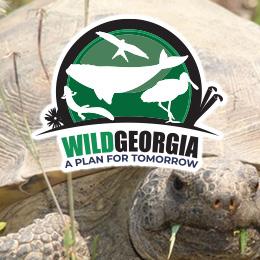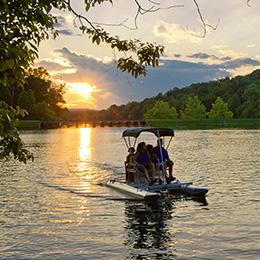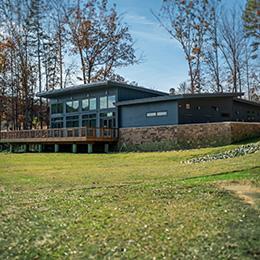Species
- Rafinesque's big-eared bat (Corynorhinus rafinesquii) GA Rare
- Big brown bat (Eptesicus fuscus)
- Silver-haired bat (Lasionycteris noctivagans)
- Eastern red bat (Lasiurus borealis)
- Hoary bat (Lasiurus cinereus)
- Northern yellow bat (Lasiurus intermedius) GA Species of Concern
- Seminole bat (Lasiurus seminolus)
- Southeastern bat (Myotis austroriparius) GA Species of Concern
- Gray bat (Myotis grisescens) US & GA Endangered
- Eastern small-footed bat (Myotis leibii) GA Species of Concern
- Little brown bat (Myotis lucifugus) GA Species of Concern
- Northern long-eared bat (Myotis septentrionalis) US & GA Endangered
- Indiana bat (Myotis sodalis) US & GA Endangered
- Evening bat (Nycticeius humeralis)
- Tri-colored bat [formerly Eastern pipistrelle] (Perimyotis subflavus) GA Species of Concern
- Brazilian free-tailed bat (Tadarida brasiliensis)
About
Georgia is home to 16 species of bats! Bats are a valuable and fascinating part of Georgia's natural heritage. They provide a beneficial service by foraging on flying insects, many of which are pests. A single bat can eat hundreds of mosquitoes in one hour. They also eat large numbers of moths and beetles that cause agricultural damage.
Bats will opportunistically roost and forage in altered habitats such as suburban and agricultural landscapes. A few species, however, have specific habitat needs, such as caves with suitable temperature and humidity, or large, hollow bottomland trees. Populations of these species are more vulnerable to habitat alterations and are of conservation concern. Other factors impacting bat populations include pesticides and water quality that impact aquatic-based food supplies, wind energy and as of the mid-2000s, a disease known as white-nose syndrome.
Bats and Viruses
The novel coronavirus that causes COVID-19 did not originate in bats in North America. Although the original source of the virus is unknown, some bat species in China are natural wildlife reservoirs for SARS-associated coronaviruses (SARS stands for severe acute respiratory syndrome). However, bats in the wild and undisturbed by people do not pose a health threat. For more about bats and viruses:
- Bats and COVID-19 Updates (Bat Conservation International)
- Watch: Why Do Bats Carry So Many Dangerous Diseases? (SciShow)
- Watch: Bat Virologist Answers Kids' Questions about COVID-19 (Dorothy Tovar, Stanford University)
Note: The videos contain advertisements.
Useful Links
- Excluding bats from your home
- Bat House installation
- Bat survey guidance for Georgia projects
- Native plants to attract bats
- White-nose syndrome in Georgia
- Volunteer Opportunity: Anabat Acoustic Survey Volunteer Project Page
- Volunteer Opportunity: Bat Roost Monitoring Project
- Case Study: Bridgework Benefits Drivers and State's Biggest Bridge Roost for Bats
- Learn survey techniques to look for bats in transportation structures by watching this video
Other Resources
- For information about bat species of concern in Georgia, visit our biodiversity portal.
- For more information about bats, visit the experts at Bat Conservation International.
- Want to get more involved with Bats in Georgia? Visit the Georgia Bat Working Group webpage to learn how.
- To read more about white-nose syndrome, visit the White-Nose Syndrome Response Team website.
















